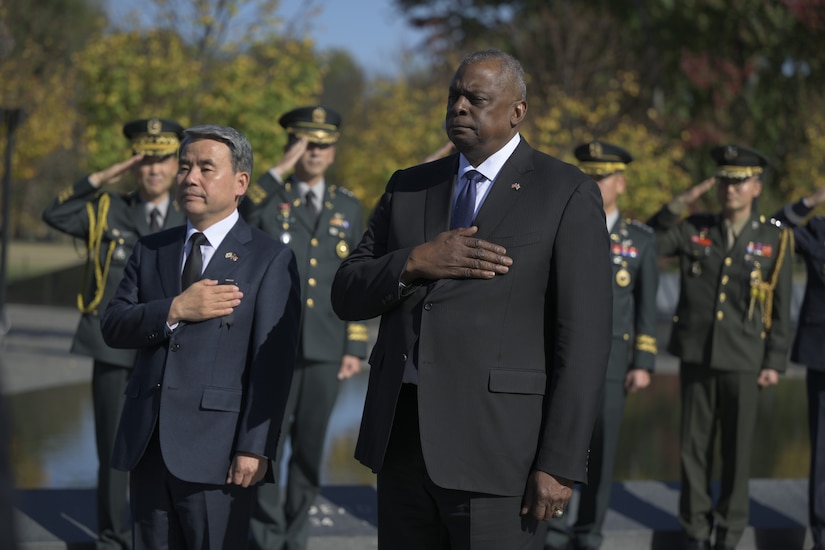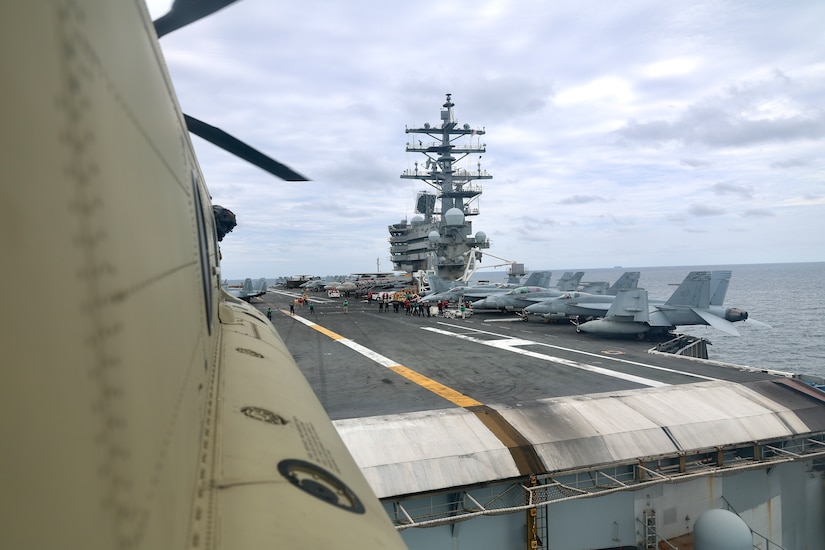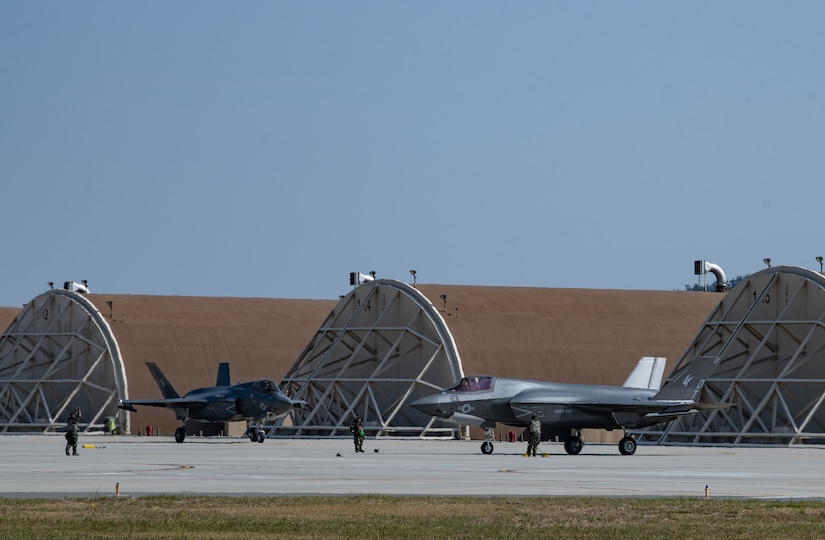Official websites use .gov
Secure .gov websites use HTTPS
Secretary of Defense Lloyd J. Austin III and South Korean Defense Minister Lee Jong-sup affirmed that the U.S.-South Korea alliance has been tested in war and peace and remains rock-solid.
Austin and Lee met for the 54th Security Consultative Meeting at the Pentagon today. The men reviewed the status of the alliance and examined ways to make it even more interoperable and more effective in deterring North Korea.
The meeting came after North Korea's "illegal and destabilizing launch of an intercontinental continental ballistic missile last night, as well as additional missile launches today," Austin said. "I've consulted with Minister Lee and we've decided to extend Vigilant Storm, which is our long-scheduled, combined training exercise to further bolster our readiness interoperability. We'll continue to work closely together to develop options to protect the United States and our allies in the region."
The Security Consultative Meeting brings U.S. and South Korean defense leaders together to discuss challenges and opportunities and to develop strategies to deepen cooperation and friendship. The U.S.-South Korean Mutual Defense Treaty was signed in 1953. South Korea had been ravaged by the Korean War — begun in 1950 when North Korean troops stormed across the 38th parallel.
South Korea is now the 10th largest economy in the world and a world-class military that has fought alongside the United States in Vietnam and Afghanistan. "For nearly seven decades, this alliance has been an anchor of peace and security on the Korean Peninsula and across the broader Indo-Pacific," Austin said. "And today, [South Korea] is a tremendously capable ally and a provider of security in the region and a defender of the rules-based international order that keeps us all secure."
North Korea was an obvious discussion point in the meeting, and Austin reiterated that the U.S. commitment to the defense of the South Korea is "ironclad."
He said deterrence includes the full range of U.S. nuclear and conventional and missile defense capabilities. The secretary often speaks of integrated deterrence, and he pointed to the deployment of fifth generation fighters and the visit of the aircraft carrier USS Ronald Reagan to the peninsula earlier this year as examples of that extended deterrence.
"On the peninsula, we're returning to large-scale exercises to strengthen our combined readiness and our ability to fight tonight, if necessary," he said. "We're committed to building on these efforts to strengthen integrated deterrence and to ensure that this alliance continues to bolster security and stability on the Korean Peninsula and throughout the Indo-Pacific."
In his remarks, Minister Lee stressed the "robustness of the ROK [South Korea]-U.S. military alliance and the steadfastness of the combined defense posture."
Lee also addressed North Korean threats from nuclear weapons "Secretary Austin and I affirm that any nuclear attack by [North Korea] including the use of tactical nuclear weapons is unacceptable and [will] result in the end of Kim Jong Un regime by the overwhelming and decisive response of the alliance," he said through a translator.
The United States and South Korea want North Korea to turn away from its destructive path.
The two defense leaders also spoke about trilateral talks that include Japan, Lee said.
"For decades, U.S. and [South Korean] service members have fought side-by-side to defend the ideals of freedom," Austin said. "This alliance is founded on that shared sacrifice. So, we will confront the challenges of the future the same way that we have for nearly 70 years — by standing shoulder-to-shoulder as proud allies. I'm enormously proud of what we've accomplished together, and I'm very grateful for the Republic of Korea's [South Korea's] partnership."
Choose which Defense.gov products you want delivered to your inbox.
The Department of Defense provides the military forces needed to deter war and ensure our nation's security.





